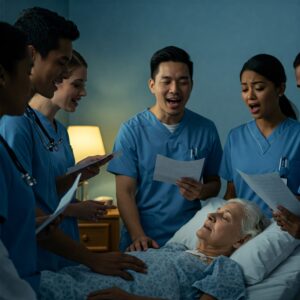Finding Your Way: A Guide to Home Hospice Providers in Minnesota
The perfect provider is about finding hands that hold both expertise and heart. This article illuminates the path to discovering Minnesota’s hospice resources.

Quality Indicators: Building Trust in Minnesota Hospice Care
You’re facing one of life’s hardest decisions. Finding the right Minnesota hospice provider feels overwhelming when you’re already dealing with so much. But you can identify quality indicators that show which providers truly care about excellence.
These markers help you build trust when choosing hospice care for someone you love.
State Licensure
Every legitimate Minnesota hospice holds licensure through the Minnesota Department of Health (MDH). This credential means the provider meets state standards for care and safety.
Check this through the MDH Health Care Provider Directory. Call MDH directly if you need extra verification.
Medicare Certification
Hospices serving Medicare or Medicaid patients need certification. This shows they follow federal health and safety standards called Conditions of Participation.
Most established Minnesota hospice organizations have this certification. You can verify it through the MDH Directory and Medicare’s comparison platform.
Voluntary Accreditation
Some providers go further and get accreditation from organizations like The Joint Commission or the Community Health Accreditation Partner (CHAP). This voluntary process means rigorous evaluation against high standards.
It’s optional, but accreditation shows an organization commits to continuous quality improvement.
Public Resources for Performance Data
You don’t have to take providers’ word for their quality. Here’s where to find real data:
Medicare Hospice Compare
This federal resource at medicare.gov/care-compare lets you compare Medicare-certified hospices in your area. You’ll see objective data on:
Symptom management effectiveness Family communication quality Support services adequacy
CAHPS Survey Results
The Consumer Assessment of Healthcare Providers and Systems (CAHPS) Hospice Survey captures feedback from families who actually used these services. Results show as star ratings for:
Team communication clarity Emotional and spiritual support depth Symptom management effectiveness Overall satisfaction levels
Many providers showcase their recommendation rates from these surveys.
Minnesota Department of Health Resources
The MDH provides state-specific tools:
Provider Evaluation History: See records of previous MDH surveys, investigations, and enforcement actions for specific hospice providers Complaint Process Information: Learn how to raise concerns about provider accountability License Verification Tools: Confirm a facility’s current license status
Questions for Direct Conversations
Public information gives you a foundation. But talking directly with potential providers shows you if they match your family’s needs and values.
Ask these questions:
Quality Measurement: “How does your organization perform on Hospice Compare quality measures? What specific initiatives are you implementing to enhance care quality?”
Staffing Structure: “What nurse-to-patient and aide-to-patient ratios do you maintain? What is your annual staff turnover percentage? How do you support continuity of care when transitions occur?”
Visit Frequency: “How often will team members—nurses, aides, social workers, chaplains—visit? How readily does your visit schedule adapt to changing patient conditions or family needs?”
After-Hours Support: “What specific protocols provide responsive care during evenings, weekends, and holidays? What response timeframes can families expect for urgent situations?”
Specialized Services: “Can you describe your specific offerings regarding complementary therapies, bereavement support duration and structure, and volunteer services?”
Care Coordination: “What systems provide seamless communication between your hospice team, our current physicians, and other healthcare providers?”
References: “Can you connect us with healthcare professionals or families with firsthand experience of your services?”
Complete Assessment Approach
The best evaluation combines different information sources. Licensure and certification confirm baseline standards. Quality indicators give you comparative performance context. Direct conversations show if they align with your family’s priorities and values.
Each perspective offers part of the picture. Together, they create understanding that supports this important decision.
You want a hospice partner who demonstrates technical competence and genuine responsiveness to your family’s unique circumstances. By considering both objective credentials and your personal impressions, you can identify providers equipped to give compassionate, dignified care during life’s most vulnerable moments.
Have Any Questions ?
Need immediate support or have urgent questions? Call us now for compassionate guidance:
- 612 389 6993
- info@serenityhospicehomes.com
Articles

Quick Links
Articles
© 2025 • All Rights Reserved







